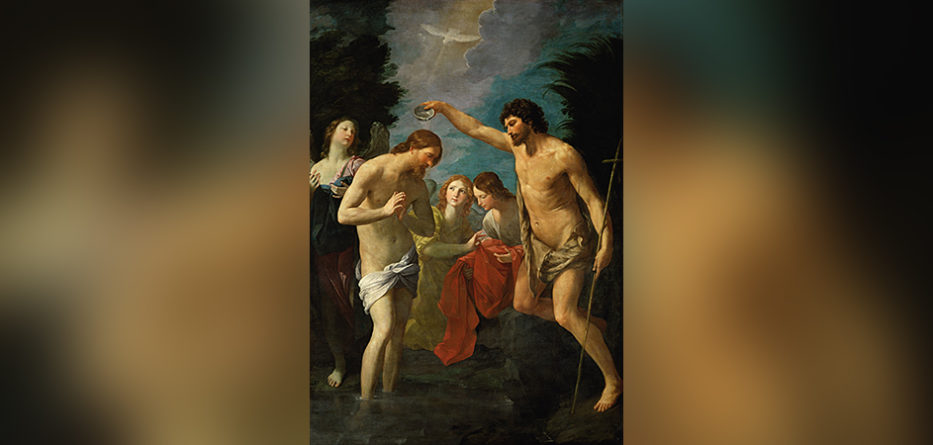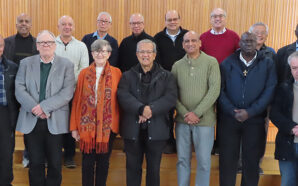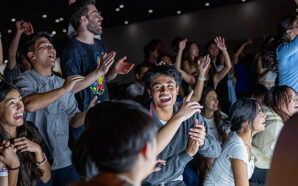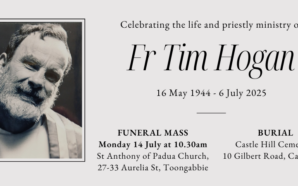The Feast of the Baptism of the Lord
Readings: Isaiah 40:1ŌĆō5, 9ŌĆō11;┬ĀPsalm 103(104):1ŌĆō4, 24ŌĆō25, 27ŌĆō30;┬ĀTitus 2:11ŌĆō14, 3:4ŌĆō7;┬ĀLuke 3:15ŌĆō16, 21ŌĆō22
9 January 2022
ŌĆ£You are my Son, the Beloved.ŌĆØ ŌĆō Luke 3:22
Today we find ourselves silently witnessing a dramatic moment in JesusŌĆÖ life. The Holy Spirit descends from above and the Father speaks words of tenderness: ŌĆ£You are my Son, the Beloved.ŌĆØ We are invited into an intimate moment within the divine familyŌĆöthe Holy Trinity. The love of the Father and Son is so real that it is a third person, the Holy Spirit, here represented by a dove. But that isnŌĆÖt the end of the story. We are not merely spectators; we have been invited to enter into the very life of the Trinity, beginning with the day of our Baptism in the name of the Father, and of the Son and of the Holy Spirit. The dynamic of love that it is the Trinity is bestowed upon usŌĆöa love that is beyond words. St John says, ŌĆ£Think of the love that the Father has lavished on us by letting us be called GodŌĆÖs children; and that is what we areŌĆØ (1 Jn 3:1).
Notice that the Father doesnŌĆÖt go on to say, ŌĆ£And now you have work to do.ŌĆØ Rather, the priority is the relationship. As St Thomas Aquinas would say: being comes before doing. That is not to say that there isnŌĆÖt work to do. Jesus certainly had a missionŌĆöa very important missionŌĆöbut itŌĆÖs not first.
It is the same for us. First we are called to be sons and daughters of our loving Father, to receive his great love and to base our lives on that. Then we respond to the call of Love by loving God and his other children in return, but that love is not of our own doing. We can only love with Love, that love with which he has first loved us.
Thank you Lord for the love you lavish upon me. Help me to remain in your love in every moment. Amen.
Sr Anastasia Reeves OP
Artwork Spotlight
The Baptism of Christ ŌĆō Guido Reni (1575ŌłÆ1642)
ŌĆ£The Baptism of ChristŌĆØ (c. 1623) Oil on canvas, 263.5 ├Ś 186.5 cm Kunsthistorisches Museum, Vienna. Public Domain.
Born on 4 November 1575 at BolognaŌĆöwhich then belonged to the Papal StatesŌĆöGuido Reni began his apprenticeship to a Flemish painter at the age of 10. By 1599, he had been received into the guild of painters, and after 1601, he divided his time between his studies in Bologna and Rome. In Rome, he gained the patronage of Pope Paul V and Cardinal Scipione Borghese, painting numerous frescoes in chapels for these and other patrons. It was Paul V who created the facade of St PeterŌĆÖs BasilicaŌĆöand made sure all knew it. His name is emblazoned across the front.
At first, CaravaggioŌĆÖs fame overwhelmed Reni, and he tried his best to imitate him. You can see that influence of Caravaggio in ReniŌĆÖs use of light in his Baptism of Christ, painted about 1623 and now housed in Vienna. Reni strove towards a classic harmony in his paintings, resulting in a calm and serene mood. His religious compositions made him one of the most famous painters of his day in Europe, and a model for other Italian Baroque artists.
There is an overwhelming simplicity about this scene. John is the main figure, completely bathed in light. This cleverly highlights JesusŌĆÖ humility, as he seems to be standing in JohnŌĆÖs shadowŌĆöhead bowed and hands joined in prayer. John’s flesh has a deeper toneŌĆödesert tan? John is slightly kneeling on the banks of the Jordan, almost a genuflection. Below the arc formed by these two figures, we see two angels who, together with a third at the left, are holding ChristŌĆÖs robes in readiness. They are painted in a glowing red which is probably an allusion to the robe Christ will wear to his passion. In fact, Christ specifically talks of his passion as a Baptism. To the apostles James and John, he asks: ŌĆ£Can you drink the cup that I shall drink, or be baptised with the Baptism with which I shall be baptised?ŌĆØ (Mk 10:38). This feast, then, the last of the Christmas season, links us directly with the nextŌĆöLent.
JesusŌĆÖ Baptism was actually, at first, an embarrassment to the early Christians. If JohnŌĆÖs Baptism was for the forgiveness of sins, then why would the All-Holy One seek Baptism? In fact, St Matthew presents John as saying, ŌĆ£It is I who need Baptism from you, and yet you come to me!ŌĆØ (Mt 3:14). But by Baptism, Jesus was identifying with the human race in all its needs, and even its failures. It meant that, without ceasing to be divine, Jesus had to experience all that we experience, he had to feel the ambiguities of human existence and the agony of making human decisions.
Only St Luke makes the specific comment that it was after his Baptism, and while he was at prayer, that the heavens opened (which Adam had closed by his sin), the Holy Spirit was seen in bodily form (as the Spirit had hovered over the beginnings of creation)ŌĆöŌĆ£A divine wind (swept) over the watersŌĆØ (Gn 1:2), and that Jesus heard his Father’s voice: ŌĆ£You are my Son, the BelovedŌĆØ (Lk 3:22).
In fact, St LukeŌĆÖs has often been called the ŌĆ£Gospel of prayerŌĆØ. He shows Jesus praying at every important step of his lifeŌĆÖs journey. Only Luke records the prayer of the good thief (Lk 23:42); only Luke mentions Our LadyŌĆÖs practice of continuous prayer (Lk 2:19); only Luke records the Canticles of the Magnificat (Lk 1:46ŌĆō55), the Benedictus (Lk 1:68ŌĆō79) and the Nunc Dimittis (Lk 2:29ŌĆō32) which the Church prays day and night in the Divine Office.
So, here at the Baptism, there is a certain dialogue. It was while Jesus was consciously communicating with his Father that he heard his FatherŌĆÖs voice. JesusŌĆÖ constant habit of prayer made it easy for God to speak with him. If we have no habit of prayer, God will have a difficult time getting through to us. What a terrible thing to get to heaven and hear God say, ŌĆ£You know, I always liked you. I’m sorry you never gave me the chance to tell you.ŌĆØ
ŌĆ£You are my Beloved,ŌĆØ the Father says. With this confidence, Jesus could now enter his mission.
Mgr Graham Schmitzer
┬Ā
Sr Anastasia Reeves OP is a member of the Dominican Sisters of St Cecilia, born and raised in Australia. She has completed studies in engineering, education, philosophy and theology. Since entering religious life in 2010, Sr Anastasia has served as a high school mathematics and religion teacher in Australia and the United States. She currently serves with the Parish Renewal Team in the Archdiocese of Sydney.
Monsignor Graham Schmitzer recently retired as the parish priest at Immaculate Conception Parish in Unanderra, NSW. He was ordained in 1969 and has served in many parishes in the Diocese of Wollongong. He was also chancellor and secretary to Bishop William Murray for 13 years. He grew up in Port Macquarie and was educated by the Sisters of St Joseph of Lochinvar. For two years he worked for the Department of Attorney General and Justice before entering St ColumbaŌĆÖs College, Springwood, in 1962. Fr Graham loves travelling and has visited many of the major art galleries in Europe.
With thanks to the┬ĀDiocese of Wollongong┬Āwho have supplied the weekly Advent and Christmas 2021 reflections from their publication,┬ĀBlessed ŌĆō Advent & Christmas Daily Reflections 2021.








